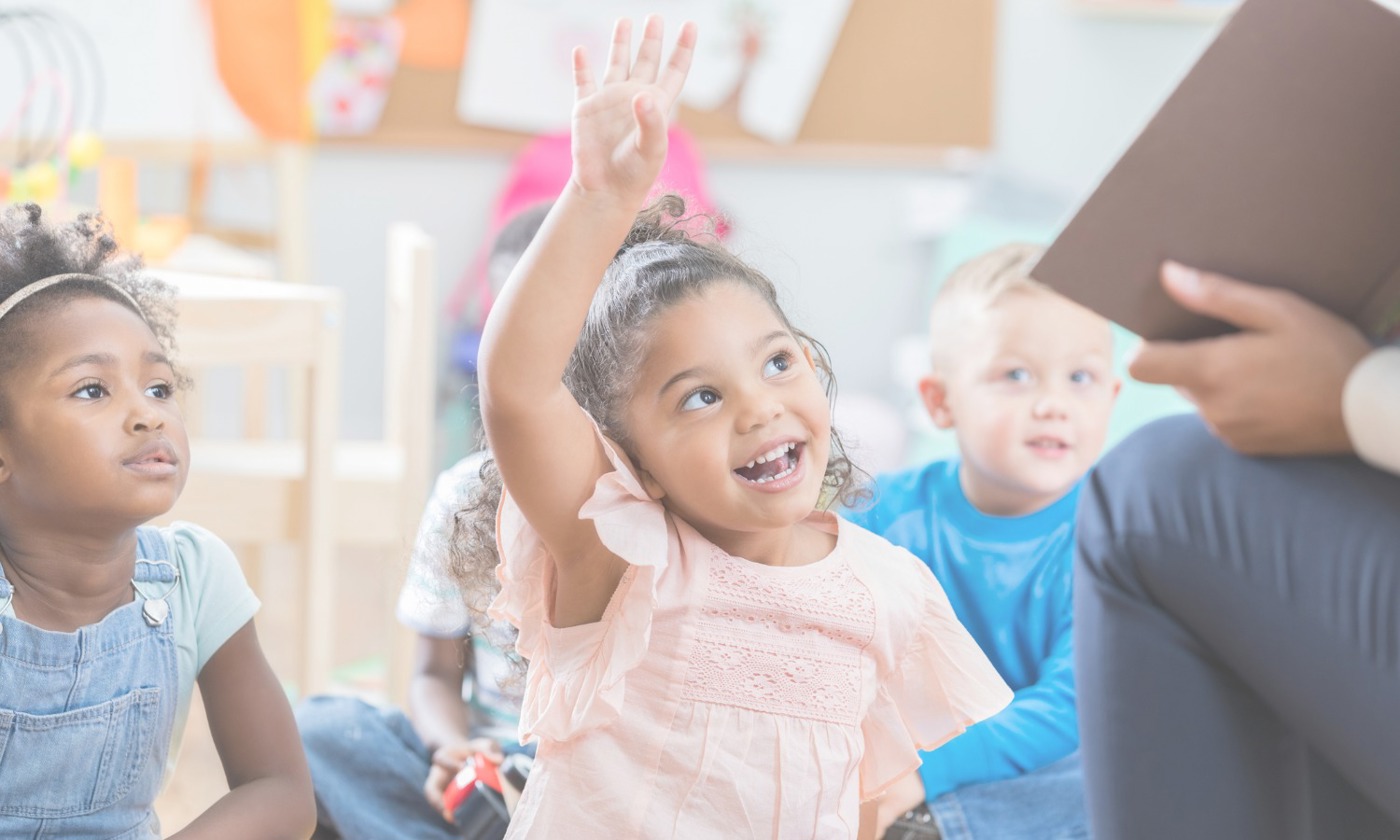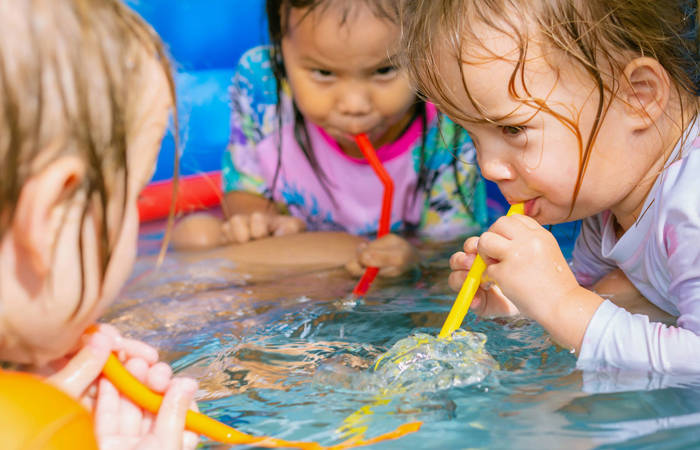Like what you see?
Sign up to receive more free parenting advice.
Thank you for subscribing to our newsletter!
Health & emotions

Credit: iStock.com/SDI Productions
Confidence in the preschool years, not only translates into success at school, but to increased job satisfaction as an adult.
All parents want their child to be confident individuals, ready to take a risk on any new challenge, whether that is joining the soccer team or feeling up to the task of learning how to read.
But it’s not just the early years. Parents are also looking ahead to the teenage years, where they hear stories of worsening mental health amid an image-heavy social media life than can easily destroy a child’s confidence.
So, how do we instil confidence in our preschoolers so they can be successful today and in their future?
The first part is understanding what confidence really is.
There can be a misconception about confidenceKelly Nadel, Licensed Clinical Social Worker (LCSW) and Director of Clinical Training at Good Inside
“Confidence isn’t about ‘feeling good about yourself’, instead it’s closer to self-trust.
“It can be described as being a ‘good feeler’ or ‘noticer of your feelings’.
“It’s not necessarily feeling ‘good’ all the time, but rather believing in whatever it is that you are feeling.”
She says that for children under five years old, confidence looks like a child saying they don’t like a certain type of dinner or refusing to wear a pair of uncomfortable shoes.
“It can also look like a child clinging to you at a birthday party as they know they aren’t ready to separate from you just yet,” Nadel adds.
“Confidence in young children looks like being aware of how they are feeling and trusting their own experience.”
A University of Washington study found that by the age of five, children can have a sense of confidence comparable in strength to that of adults.
It also found a correlation between high confidence and a strong sense of identity.
The pros of confidence
“Confidence allows children to feel secure with themselves because they have a foundation of self-trust,” Nadel explains.
That self-trust allows children to engage with the world knowing they can ‘figure anything out’, which translates into them trying new things and tackling tricky situations.
In a 2004 paper, the authors identified that positive feelings of self-esteem in the childhood years have been shown to increase children’s confidence and success in school.
In short, positive self-esteem was a predicting factor for academic success.
High self-esteem in primary school children also have higher cognitive aptitudes.
They also identified that self-esteem measured in childhood and in early adulthood was linked to job satisfaction in middle adulthood.
“Adults with chronic self-doubt may limit themselves by turning down opportunities for personal development or avoiding difficult situations,” Nadel explains.
“During the preschool years, parents have an opportunity to provide a safe space for their child’s failures.
“Children need to believe that their abilities can be developed through dedication and hard work AND that frustration, not-knowing, setbacks and failures are part of the pathway to success.
“This allows children to begin their school years with the idea that they have everything they need inside them to figure things out, which is a mindset that will carry them through adulthood.”
How can parents support their child’s confidence?
A 2012 study found that children's self-esteem is heavily influenced by the environment they are raised in, particularly in how their parents raise them, as this is the first relationship a child develops with another person.
The authors found the ability for a child to have a positive view of themself, or high self-esteem, was impacted by the way the children were treated by their parents.
So, how can parents raise their children to be confident?
Nadel recommends five strategies:
Believe your child
“More often than not, parents accidentally try to convince their child into or out of an experience they are having,” she says.
For example, instead of dismissing your child’s protests for going to the playground, something they might usually love, instead, she recommends, acknowledging their feelings about being hesitant to engage in the activity and letting them know you’ll wait with them until they feel ready.
Another example, is dismissing your child’s feelings when they don’t believe they are as good at something than their peers.
For example, when they say, “James is a faster runner than me,” instead of saying, “No, that’s not true,” validate their perception and feelings.
This helps children be comfortable with who they are, even when they aren’t the best.
Talk about emotions
“If confidence comes from self-trust, and self-trust comes from tuning into your own emotions, then we can build confidence in children by respecting and inquiring about feelings,” Nadel explains.
If your child is hesitant to share their feelings, she recommends sharing your own personal story of something frustrating or upsetting.
This will help to neutralise some of the shame that can come with discussing internal sensations.
Focus on process over product
“When parents spend time in a growth mindset with their child, they communicate that the arc of problem solving is more important than the outcome of any one specific issue,” Nadel says.
Instead of focusing on the final product, like a child tying their own shoelace, she recommends parents focus on their child’s internal experience, like, “I see how hard you’re trying”.
She says this builds a child’s confidence in their ability to get through something tough.
Inside stuff versus Outside stuff
“Self-confidence comes from the belief that who you are on the inside is good and valuable,” explains Nadel.
“Emphasising what you see inside your child as opposed to valuing what’s outside of them communicates this.”
Instead of focusing on things like being the best reader in the class or the child who scored the most goals, aim to focus on things like kindness, positive attitude or good sportsmanship.
Valuing those inside traits builds self-confidence.
MGI
“At Good Inside we have an acronym we use all the time: MGI. This stands for the Most Generous Interpretation,” Nadel explains.
“This strategy is key for confidence building.”
She says that whenever a child says or does something that parents wish they hadn’t, parents have a chance to reflect back on their most generous or least generous interpretation of who the child is.
“When we reflect back to our child that they are flexible, creative, empathic, sturdy and resilient children, they internalise this view of themselves.”
Top books for children’s self-esteem:
- The Best You Can Be by Cori Brooke
- What's My Superpower? by Aviaq Johnston
- Life Lessons for Little Ones: You Are Enough by Jess Sanders
- The Wonders of Never Giving Up by Maddy Mara
- Perfectly Norman by Tom Percival
- The Lion Inside by Rachel Bright
- Giraffes Can't Dance by Giles Andreae and Guy Parker-Rees
- Hey Awesome by Karen Young
- The Very First You by Scott Stuart







